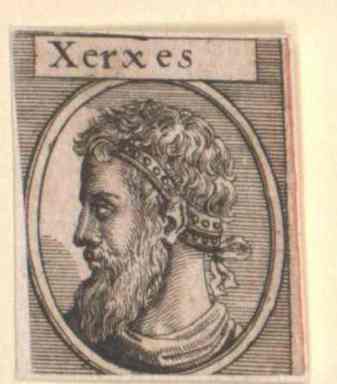In the figure of the Persian king Xerxes, Herodotus achieved a magisterial portrait of an unstable despot, an archetype that has plagued the sleep of liberal democracies ever since.
We have our take on the word History directing relating to the way that Herodotus treated this subject and the depth of impact it has had ever since. I seem to think this was also where the use of history and or changing it became the kitsch thing to perhaps do to trick your enemy perhaps. Like many other words in our language, there are bi-polar meanings. Take the word Cross for instance. Feeling anger and the obvious religious symbolism and the astrological equivalent as well.
Xerxes was the son of King Darius (Persian kings). He was prone to take hissy fits and be super tough one minute and break down into tears the next minute. He sounds rather bi-polar himself.
I have read this and also read that this does remind us of other psychopathic dictators in our more recent history, Mussolini and Hitler to name just two.
Herodotus's "Histories" were broken up into nine parts. Each part was named after the nine Muses of Clio. The Muse of History being the first book and so on and so forth with King Xerxes taking up the last two volumes of seven and eight. The other Kings Cyrus, Cambyses treatment was light compared to Darius and Xerxes.
Xerxes
Xerxes
I of Persia, also known as Xerxes the Great, was the fourth of the king
of kings of the Achaemenid Empire. He ruled from 486 BC until his
assassination in 465 BC at the hands of Artabanus, the commander of the
royal bodyguard. Wikipedia
What I found amusing was his poor mothers name. She was Atossa. Funny when you think of this in todays conotations. His father Darius I suspect had some sort of skin disease because there is a skin disease known as this. But Atossa is very special indeed.
Xerxes official name or the name of his sacred office was Shahanshah. This means King of Kings. In the Biblical book of Esther he is referred to as the Ahasuerus of Persia. His name in Greek is a version of the Persian Khshayarsa or the Kyashyar Shar and he was known in the East as this.
Something further to this event: The Greek book of Esther, included in the Septuagint, is a retelling of the events of the Hebrew Book of Esther rather than a translation and records additional traditions which do not appear in original Hebrew version, in particular the identification of Ahasuerus with Artaxerxes and details of various letters. It is dated around the late 2nd to early 1st century BCE. The Coptic and Ethiopic versions of Esther are translations of the Greek rather than the Hebrew Esther.
hhhhhhhhhhhhhhhhhhh

No comments:
Post a Comment